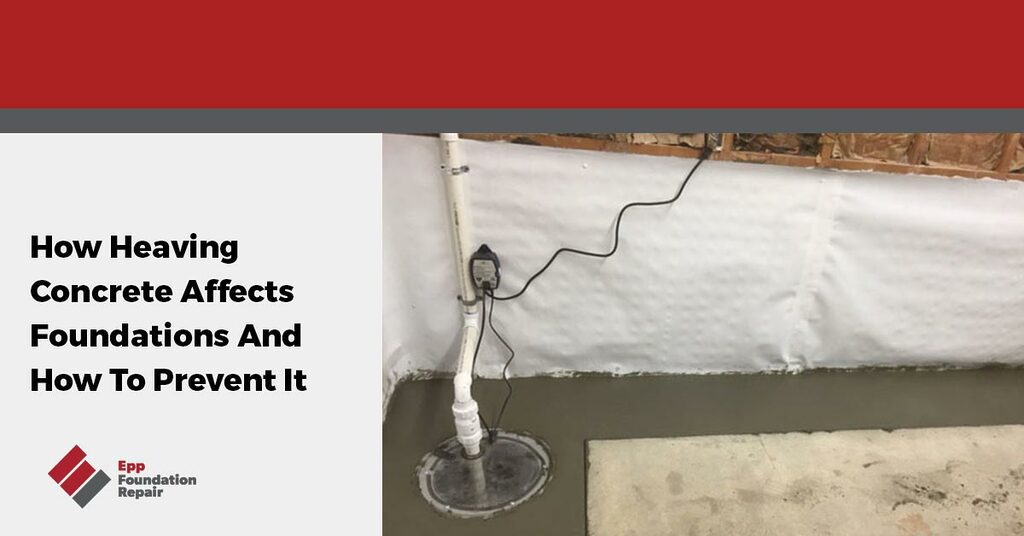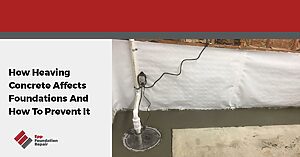Looking for information about how heaving concrete affects foundations? If so, you’ve landed on the right page because that’s what this article is about. We’re going to review what the term “heaving” means when talking about foundations, what causes heaving, signs your home’s foundation might be heaving, repair options, and more.
What Does Heaving Concrete Mean When We’re Talking About Foundations?
Foundation heaving occurs when the soil under the foundation expands due to moisture absorption or freezing, resulting in an upward force on the foundation. This can happen in areas where the soil has a high clay content or is prone to freeze-thaw cycles. In both cases, the foundation moves – or heaves – upward. Then, when the clay-rich soil dries out or the soil thaws, the foundation moves downward. Over time, this movement under the foundation can cause something called “differential settlement,” or when a foundation settles into the ground unevenly. The best way to describe differential settlement is via an illustration:
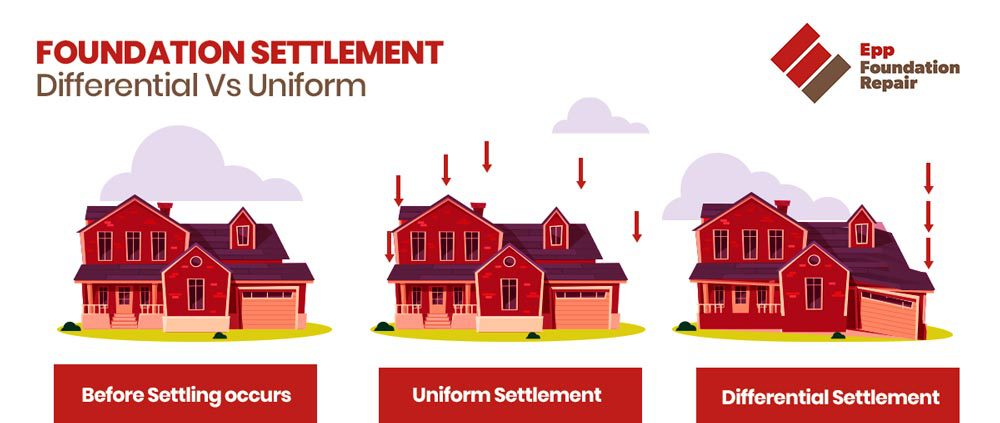
A small amount of uniform settlement is pretty common after a house is built, and although it might cause a few minor cracks here and there, it’s usually nothing to worry about.
Differential settlement is another matter entirely. Differential settlement places a lot of stress on a foundation. If it isn’t promptly corrected, it can lead to severe structural damage, manifesting as wall cracks, uneven floors, and doors and windows that don’t open and close properly.
What Causes A Concrete Foundation To Heave?
As noted above, the two leading causes of foundation heaving are expansive clay soil and frozen soil. Both cause movement in the ground under the foundation and can lead to differential foundation settlement and severe structural damage.
How To Prevent A Foundation From Heaving?
Because clay-rich soil expands as it soaks up water and water-saturated soil expands when it freezes, you can help prevent a foundation from heaving by ensuring the ground around it stays dry. Here are some ways to do that:
- Clean your gutters regularly – When gutters are clogged with leaves and other debris, water can overflow and run down the side of the house and straight into the ground around the foundation.
- Install downspout extensions – These are inexpensive, easy to install, and will direct runoff away from the foundation before release.
- If necessary, regrade your yard – You want to ensure that the yard slopes away from the foundation. This prevents groundwater from draining toward the foundation.
- Keep water-hungry vegetation away from the foundation – While flowers and shrubs might look beautiful planted next to the foundation, they need moisture. You don’t want to give yourself a reason to pour water into the ground next to the foundation.
- Ensure you don’t have plumbing leaks – These can dump a lot of water into the ground around the foundation.
- Install a drain tile system – Drain tile systems are a very effective way to prevent excess moisture from building up in the ground around the foundation. They collect groundwater and channel it safely away from the foundation. There are two types of drain tile systems, exterior and interior:
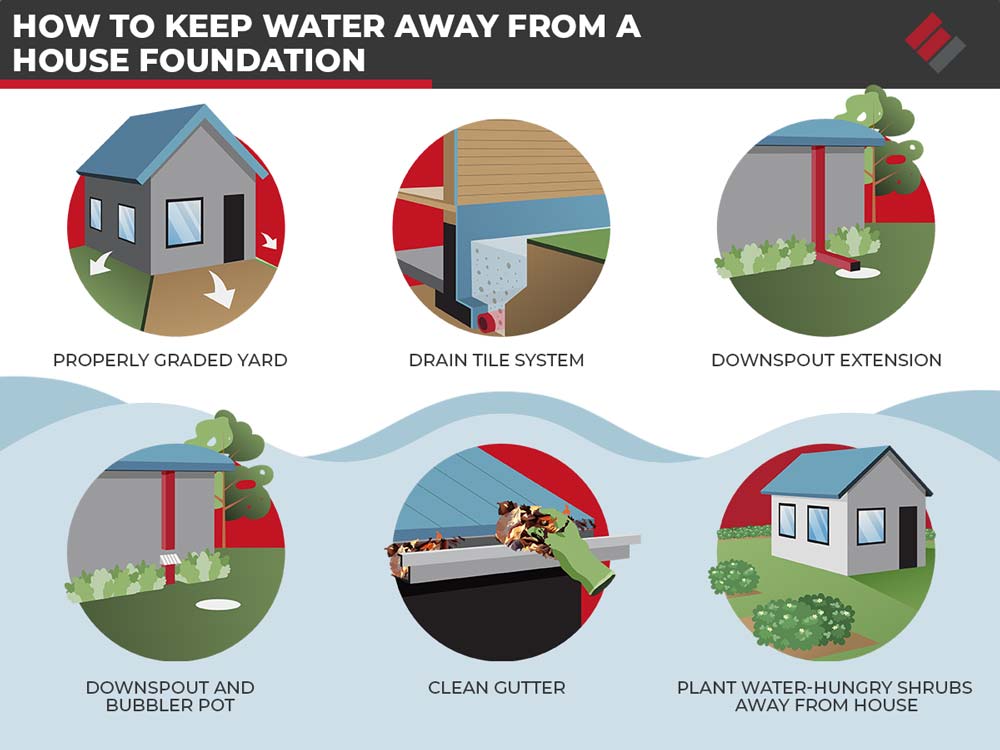
Exterior drain tile system
An exterior drain tile system is installed around the outside perimeter of your foundation at the footing level. The general installation procedure is as follows:
- The soil around the foundation is excavated down to the footing.
- A shallow trench is dug around the foundation perimeter and lined with gravel.
- A perforated drainage pipe is placed on the gravel and covered with more gravel.
- The excavated soil is replaced.
Excess groundwater will flow into the drainage pipe and toward a
sump pit. Once the sump pit fills with water, a sump pump will turn on and eject the water away from the foundation.
Interior drain tile system
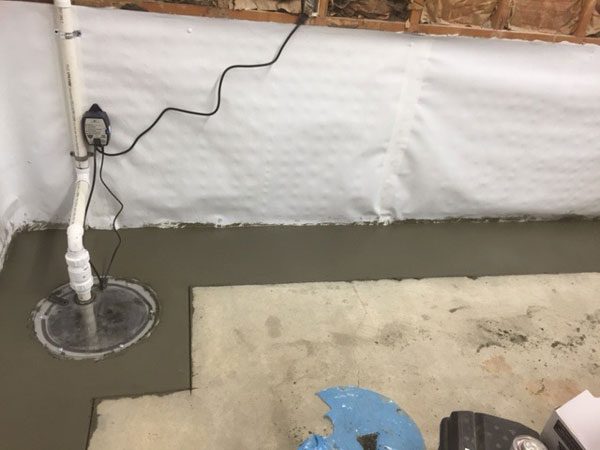
An interior drain tile system is installed around the inside perimeter of your basement or crawl space. The installation procedure is similar. A shallow trench is dug, and a drain pipe is placed into it. The drainage pipe channels excess moisture in the ground toward a sump pit. When the sump pit is full of water, a sump pump kicks in and expels the water away from the foundation.
Foundation heaving can cause significant structural damage to a house and should be taken seriously. Keeping the soil around the foundation dry and stable through proper drainage is vital in preventing foundation heave. Regular inspection and maintenance of the foundation can also help identify and address any early signs of problems before they become severe.
Signs Your Home’s Foundation May Be Heaving
Fortunately, there are signs to look out for that may indicate your foundation is heaving. These include the following:
- Wall, floor, and ceiling cracks – These can be vertical or horizontal and may appear as hairline fractures or larger fissures.
- Bowed foundation walls – When excess moisture in the ground around a foundation can’t drain off, it can cause hydrostatic pressure to build up and push against the foundation. Eventually, the wall may start to bow inward and even crack.
- Uneven floors – The unevenness might be barely noticeable at first. What happens when you place a marble on the floor?
- Doors and windows don’t open and close properly – When a foundation settles into the ground unevenly, this throws everything out of plumb. This can cause door and window frames to warp and become misaligned.
- Chimneys and porches are pulling away from the house – The separation might be very slight.
- Stair step cracks in brick or masonry – These are a telltale sign of foundation movement.
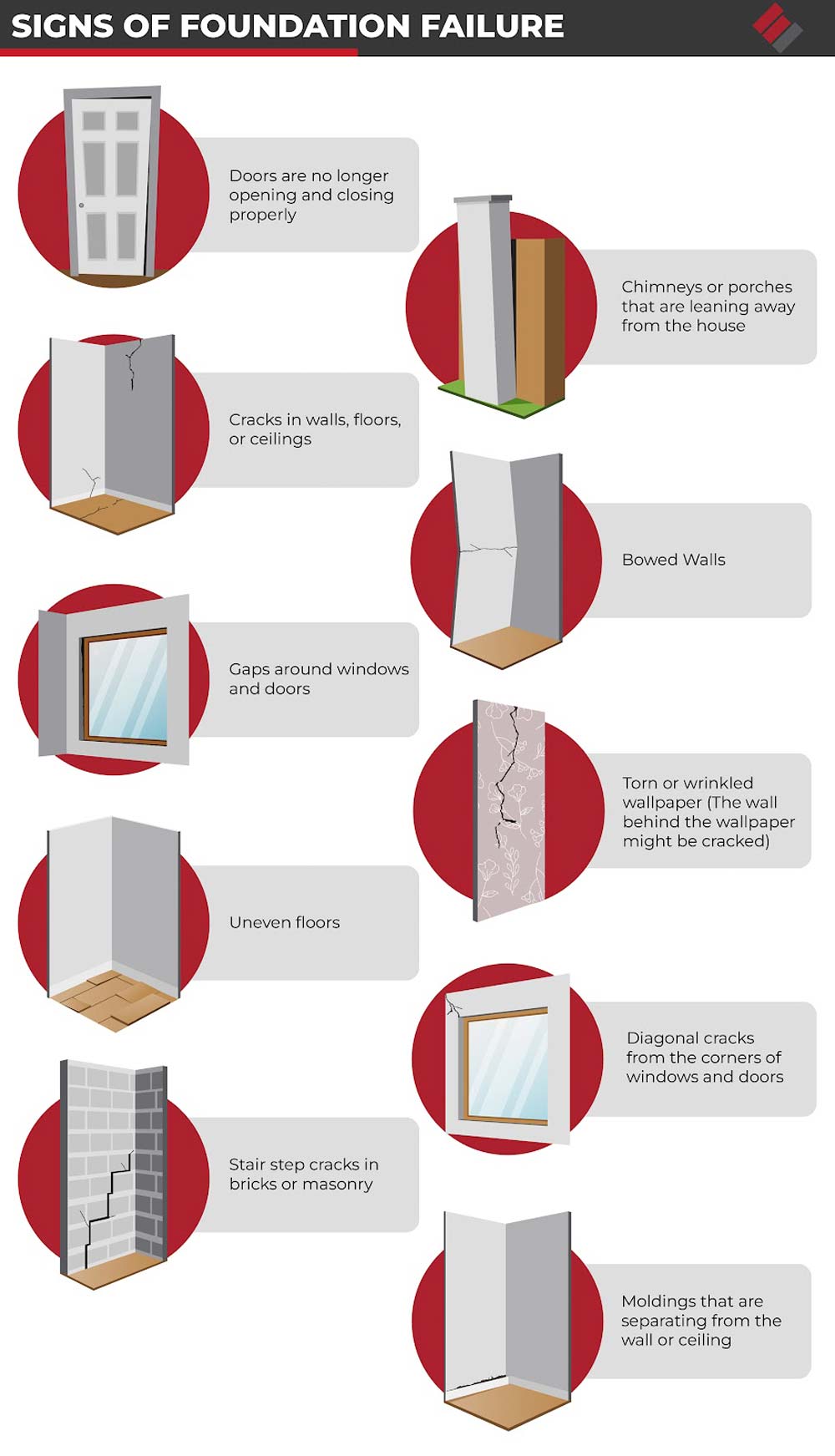
If you notice any of these signs in your home – or anything else suspicious – contact a professional foundation repair contractor as soon as possible and ask for an inspection.
Repair Options For Foundations Damaged By Heaving Concrete
The chosen repair solution will depend on the damage sustained by the heaving. Did the heaving cause differential settlement or a bowed and cracked foundation wall? Here are two possible repair solutions:
Repair solutions for differential settlement
The most common repair solution for correcting differential settlement is underpinning using push, helical, or slab piers. This extends the foundation down to soil that’s able to support it. For more information, see What Is Underpinning?
Repair solutions for a bowed and/or cracked foundation wall
If heaving caused a foundation wall to bow inward and crack, the repair solution might be carbon fiber straps or wall plate anchors to strengthen and stabilize the wall. For more information, see What is Carbon Fiber Foundation Repair?
If you’re concerned about heaving concrete in your home’s foundation, contact us today to schedule a foundation evaluation. If we find a problem, we’ll give you a repair estimate. We serve areas in Nebraska, Iowa, Kansas, and Missouri.

